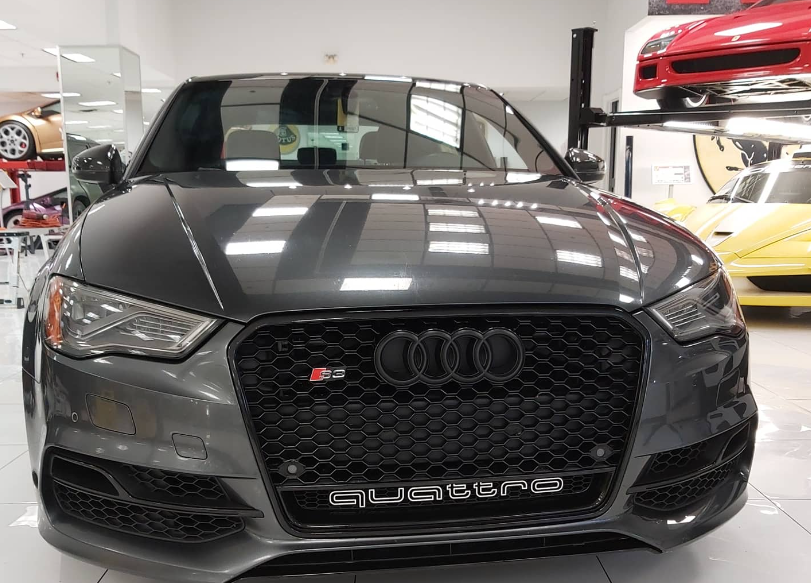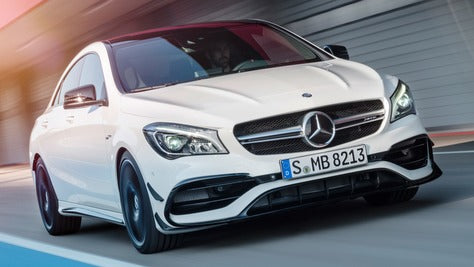Choosing the correct parts for your car is crucial for maintaining its performance, safety, and value. Whether you're a car enthusiast or simply looking to save on repair costs, understanding the differences between OEM (Original Equipment Manufacturer) parts and aftermarket parts is essential. This guide will help you make an informed decision that suits your needs and budget.
Understanding OEM Parts
What are OEM Parts?
OEM parts are manufactured by the same company that built your car. These parts are intended to fit and work as the original components that arrived with your vehicle.
Benefits of OEM Parts
Highest Quality and Compatibility
Original equipment manufacturer components are designed to fit and operate your car precisely. They provide dependability and peace of mind by going through extensive testing to fulfill exacting requirements.
Warranty Protection
You are shielded from flaws and assured of long-term performance by the manufacturer's warranty, which most OEM components carry. With expensive components, this warranty might be a significant benefit.
Ease of Selection
Using OEM parts minimizes guesswork. Because these parts are specifically made for your car, comparing brands or quality levels is unnecessary. You can be confident in their fit and function.
Drawbacks of OEM Parts
Costlier
OEM parts are more expensive than aftermarket options. Although their promised quality and compatibility frequently justify this increased price, it can be a significant consideration for users on a tight budget.
Limited Availability
OEM components may not always be easily accessible depending on the demand and the make and model of your car. More extended wait periods for maintenance or repairs may result from this.
Exploring Aftermarket Parts

What are Aftermarket Parts?
Third-party manufacturers produce aftermarket parts. These parts offer a more cost-effective alternative to OEM components.
Benefits of Aftermarket Parts
Cost Savings
Aftermarket parts are typically less expensive than OEM parts, making them an attractive option for those looking to reduce maintenance and repair costs. This affordability can be especially beneficial for budget-conscious car owners.
Variety and Customization
A wide range of parts are available in the aftermarket sector, along with possibilities for performance improvement. The aftermarket offers solutions for everything from performance tuners to your car's new diffusers and exhaust system upgrades.
Availability
More readily accessible than OEM parts are aftermarket parts. Finding the aftermarket car parts you need is easier with the large inventory of aftermarket components kept by many car parts stores and online sellers.
Drawbacks of Aftermarket Parts
Variable Quality
The quality of aftermarket parts can vary significantly between manufacturers. While some parts may match or even exceed the quality of OEM components, others may need to catch up, potentially leading to performance issues or shorter lifespans.
Compatibility Concerns
Aftermarket parts aren't made just for your car, especially when some are designed to fit different models, so there's a chance they won't work as well as OEM parts. This can cause compatibility problems and hurt the safety and efficiency of your car.
Warranty Risks
Using aftermarket parts can void your vehicle's warranty, especially if the part causes a problem that leads to a repair. It's essential to check your warranty terms and conditions before installing aftermarket components.
However, purchasing aftermarket parts from a reputable vendor, like Euro Empire Auto, significantly lowers these dangers. You can buy confidently since our premium aftermarket components are carefully chosen to guarantee they satisfy exacting requirements.
Making the Right Choice: OEM or Aftermarket?

The decision between OEM and aftermarket parts should be based on several factors, including your budget, vehicle type, and the importance of quality and warranty protection.
When to Choose OEM Parts
Warranty Concerns
If your vehicle is still under warranty, using OEM parts ensures you won't risk voiding it. Manufacturers are more likely to honor repairs if the car has been maintained with OEM components.
Essential Parts
OEM parts provide assured quality and dependability for crucial parts, such as brake pads or engine components, which can be necessary for the performance and safety of your car.
When to Choose Aftermarket Parts
Limits on Your Budget
If you want a cost-effective solution to improving your car's performance or modifying it, aftermarket car parts can save you a lot of money. They are an affordable way to upgrade your vehicle.
Customization and Performance
You can't obtain a few options from OEM sources if you want to change the appearance or performance of your car, but the aftermarket stores do. Many car parts you could wish to acquire, such as speed tuners, diffusers, custom exhaust systems, and much more, are quickly and readily available.
Popular Aftermarket Parts to Consider

Exhaust Systems
Upgrading to a custom exhaust system can significantly improve your car's performance and sound. Options like the Custom Titanium Valved Catback Exhaust for Volkswagen Golf MK7/7.5R can offer aesthetic and functional benefits.
Diffusers
Diffusers improve the aerodynamics and appearance of your car. A significant improvement is the BMW M3 Style Rear Diffuser for 3 Series F30.
Brake Pads
Aftermarket manufacturers' high-performance brake pads can outperform original equipment pads in terms of durability and stopping power.
Carbon Fibre Hoods and Grilles
Carbon fibre hoods and grilles can help your car look better and decrease weight. Examples are the Mercedes Carbon Fiber EEA Designs Hood for W177 and the Audi Honeycomb Style Front Grille for 8V PFL.
FAQ Section
Are Aftermarket Parts as Good as OEM?
Aftermarket parts can be as good as OEM parts, but quality varies widely among manufacturers. Choosing reputable brands and ensuring the parts meet your vehicle's specifications is essential.
What Does OEM Parts Mean?
OEM stands for Original Equipment Manufacturer. These parts are made by the vehicle's manufacturer or a company authorised by the manufacturer, ensuring they meet the same standards as the original parts.
What is the Difference Between OEM and Aftermarket Parts?
OEM parts are manufactured by the vehicle's company, ensuring a perfect fit and optimal performance. Aftermarket parts are made by third-party companies and can vary in quality and compatibility. Aftermarket parts are usually more affordable and offer more customisation options.
Why is OEM More Expensive?
OEM parts are more expensive because they are made to the exact specifications of the original parts and often come with a warranty. The higher cost reflects the guaranteed quality, fit, and performance.
Conclusion

Choosing between OEM and aftermarket parts is a crucial decision that impacts your vehicle's performance, safety, and overall value. While OEM parts offer guaranteed quality and compatibility, they come at a higher cost. Aftermarket parts provide cost savings and a broader range of options but require careful selection to ensure quality and fit.
At Euro Empire Auto, we offer an extensive collection of high-quality parts, which includes everything from low-cost auto parts to high-end exterior auto parts; by choosing our aftermarket parts, you minimise the risks associated with poor quality and ensure your car remains safe and efficient.
Visit our store in Brisbane or contact us for expert advice and the best selection of aftermarket auto parts in Australia.




Leave a comment
This site is protected by hCaptcha and the hCaptcha Privacy Policy and Terms of Service apply.